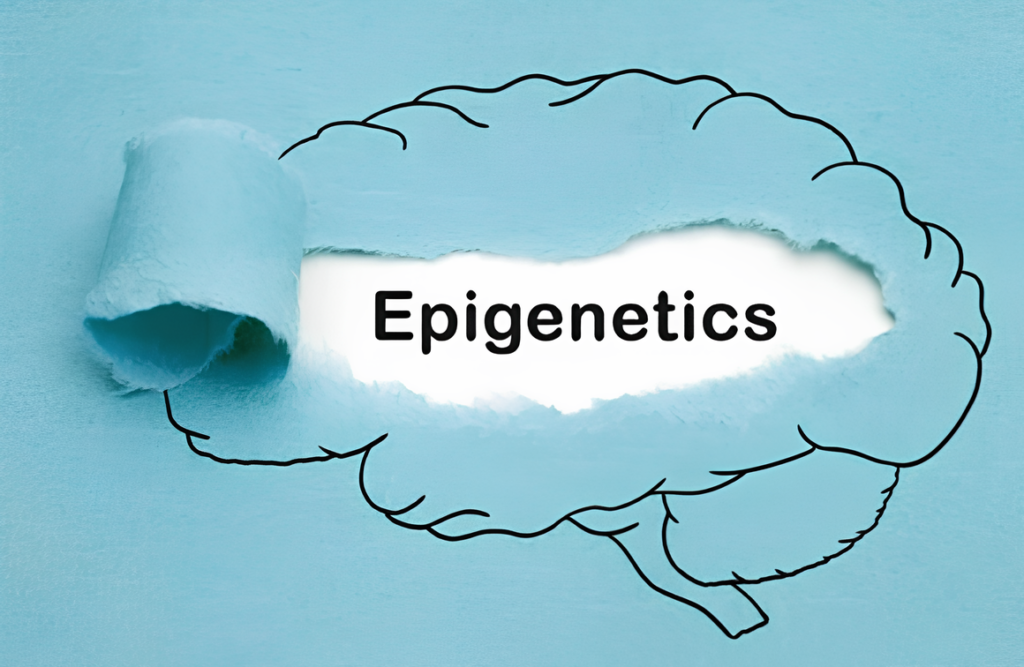In a cell, not all genes are active at the same time, but all the genetic information is there. So how does the cell control which genes need to be active and which need to be suppressed at any given time? This is the role of the epigenome adding another crucial element to the map of the human genome. It consists of specific proteins that interact with the DNA providing signals that tell the DNA to activate or repress gene expression (in a nutshell it regulates the expression of genes).
These regulatory mechanisms are not just crucial for normal cellular function but also play a significant role in disease development, particularly cancer. The hallmarks of cancer, as outlined by the Cancer Discovery journal in 2022, encompass various factors contributing to its onset and progression, such as sustained proliferative signalling and evading growth suppressors. Additionally, newer emerging hallmarks include non-mutational epigenetic reprogramming, which involves changes in the normal functioning of the epigenome.
But just how exactly do researchers investigate these interactions and define their function? That is where Chromatin immunoprecipitation (ChIP) comes in. ChIP involves using antibodies to bind to specific proteins on the DNA and can be combined with microarray (ChIP-chip) or PCR (ChIP-qPCR). However, combining next-generation sequencing, like DNA sequencing, with ChIP enables a process called ChIP-seq. This technique provides a thorough genome-wide overview of DNA-protein interactions. By the end of the article, you will have gained an insight into the fundamental ChIP-Seq lab procedure as well as the bioinformatic analysis that follows.
In the lab…
To understand how these protein-DNA interactions affect gene expression, researchers use ChIP-Seq, to lay out a detailed map of these interactions. The ChIP-Seq lab procedure typically takes a few days before the sample is ready for sequencing. The specific protocol used depends on factors such as the immunoprecipitated protein, the efficiency of the antibody, and the type and amount of cells used. To begin, the DNA binding protein is cross-linked to the DNA using formaldehyde. Subsequently, sonication is used to fragment the chromatin into smaller pieces, approximately 200-600bp in length. Then a specific antibody for the DNA protein target is added and incubated before de-crosslinking. Any unwanted chromatin is removed, and the DNA is purified and subjected to quality control. The library preparation stage may vary depending on the specific sequencing methods but most consist of DNA end repair and adapter ligation (this adds a small double-strand sequence to the DNA so it’s compatible with the sequencing platform).
Computational Analysis…
After DNA sequencing the data obtained must be analysed through computational methods. The raw FASTQ files acquired from sequencing contain short DNA sequences to which the binding proteins were attached, these are called reads. The analysis process begins with quality control to assess the quality of the reads. The reads are aligned to a reference genome if they meet the quality criteria. Subsequently, peak calling and annotation are conducted. Peak calling is a critical step in ChIP-Seq analysis as it identifies specific locations in the genome, known as peaks, where there is a significant enrichment of reads. This enrichment indicates potentially significant biological events compared to the background noise (smaller peaks found in the data). Further downstream analysis typically involves differential analysis and motif enrichment. Differential analysis compares peak regions between samples or conditions (e.g., treatment with or without a drug). Motif analysis can recognise potential binding specificities and transcription factors in a peak region. Collectively, these analyses can offer valuable insights into the function of histone modification or transcription factors and their relevance in the biological context of disease and cancer.
Conclusion
Just like with any current techniques used in research, there are always newer emerging methods. ChIP-seq provides a genome-wide view that was previously challenging with older approaches. Now, alternative methods for epigenomic profiling, such as CUT&RUN (Cleavage Under Targets and Release Using Nuclease) and CUT&TAG (Cleavage Under Targets and Tagmentation), offer faster, more precise, and less resource-intensive ways to map protein-DNA interactions, pushing the boundaries of what we can learn about gene regulation and epigenetic changes in disease contexts.
To read more on this: Click Me
References:
Hanahan, D. (2022) ‘Hallmarks of Cancer: New Dimensions’, Cancer Discovery, 12(1), pp. 31–46. Available at: https://doi.org/10.1158/2159-8290.CD-21-1059.
Ma, S. and Zhang, Y. (2020) ‘Profiling chromatin regulatory landscape: insights into the development of ChIP-seq and ATAC-seq’, Molecular Biomedicine, 1, p. 9. Available at: https://doi.org/10.1186/s43556-020-00009-w.
Mundade, R. et al. (2014) ‘Role of ChIP-seq in the discovery of transcription factor binding sites, differential gene regulation mechanism, epigenetic marks and beyond’, Cell Cycle, 13(18), pp. 2847–2852. Available at: https://doi.org/10.4161/15384101.2014.949201.
Park, P.J. (2009) ‘ChIP-Seq: advantages and challenges of a maturing technology’, Nature reviews. Genetics, 10(10), pp. 669–680. Available at: https://doi.org/10.1038/nrg2641.
Thomas-Chollier, M. et al. (2012) ‘RSAT peak-motifs: motif analysis in full-size ChIP-seq datasets’, Nucleic Acids Research, 40(4), p. e31. Available at: https://doi.org/10.1093/nar/gkr1104.



